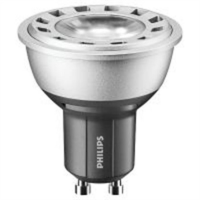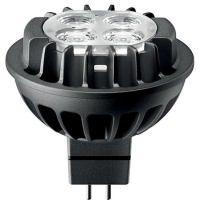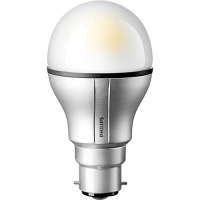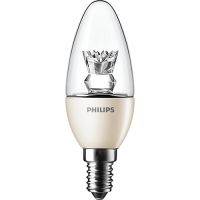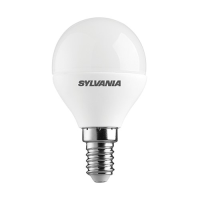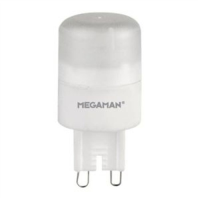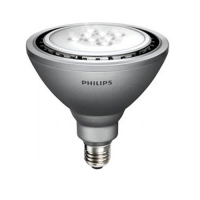Friday: 7:30am – 17:00pm
Saturday: 8:00am – 13:00pm
Saturday: 8:00am – 13:00pm
LED Lamp Buying Guide
What are LEDs?
The light-emitting diode (LED) is one of today’s most energy-efficient and rapidly developing lighting technologies. Light-emitting diodes are semiconductor devices that convert electricity to light by using the movement of electrons.
They were invented in Russia in the 1920s and put into practical use in the United States in the 1960s by General Electric. As LED materials technology grew more advanced, light output rose, while maintaining efficiency and reliability. The invention and development of the high powered LED light led to use for illumination and slowly replacing incandescent and fluorescent lighting.
LEDs are more durable than older lighting technologies and they are more energy efficient and do not contain hazardous materials. LED lighting comes in many forms with different bases including GU10s, screw in bulbs and strip lighting plus many more.
Advantages of LED lighting?
There are many advantages of LED lighting making them a favourite choice for designers, businesses and home owners alike.
- LED lights consume much less energy compared to compact fluorescent lights, halogen and incandescent bulbs.
- Lifetime – LEDs have very long lifetimes and are generally very robust. While incandescent bulbs may have an expected lifetime of 1,000 hours, LEDs benefit from having a lifetime of up to 50,000 hours. This will significantly reduce the need for lamp replacement.
- Lower maintenance – The long lifetime of LEDs reduces the need to replace failed lamps which leads to significant savings. This makes LED fixtures useful for installation in relatively inaccessible locations.
- Efficiency – LEDs are high-efficiency light sources exceeding the performance of incandescent and some florescent light bulbs. The directional nature of light produced by LEDs allows the design of luminaires with higher overall efficiency.
- Lower power consumption – LED lamps benefit from low wattages compared to incandescent and halogen equivalents. This can increase the desired effect of using LED lighting in businesses, commercial use and homes.
- Heat – LEDs don’t produce heat in the form of infrared radiation, which makes incandescent bulbs hot to the touch. The absence of IR radiation allows LED fixtures to be positioned in locations where heating from other sources would case a particular problem e.g. display food.
- Cost – LEDs can seem rather expensive compared to other light sources. However, LED lighting manufacturers such as Philips and Osram continue to work towards reducing the costs while increasing the light output. Over a period of time the initial costs is offset by lower energy consumption and lower maintenance costs.
- Instant Start – LEDs switch on rapidly, even when cold therefore there is no warm up time producing instant bright light.
- Colour – LEDs offer a wider range of colours comparing to incandescent and halogen lighting. LEDs offer the choice of very warm white, warm white, cool white and daylight inviting a range of colours for the consumer to choose from.
- Design – LED lighting plays a large part in modern design for businesses and home owners. The range of LED lighting on offer are designed and manufactured to suit a variety of specifications creating exceptional and unique designs.
- Environmental – LEDs do not contain mercury and emit no ultra violet (UV) light, therefore they not attract insects. LEDs light are also recyclable making them eco-friendly to the environment.
- The Future – LEDs are expected to replace traditional incandescent light bulbs. LEDs are rapidly becoming the preferred lighting choice for both professional and residential lighting. The continuous research and development of LED lighting will significantly produce brighter and better light output at lower initial purchase costs.
Disadvantages of LED lighting
LED lighting currently produces some disadvantages. The first initial disadvantage is the high cost however the prices are starting to fall in the market due to high competition especially for GU10 LED lamps at present.
LED lighting also have smaller beam angles than traditional incandescent and halogen lighting. This can mean more intense illumination with a smaller spread.
It is important to note that the choice of manufacturer/ brand may have an impact on the quality of light output of that particular LED lighting lamp. The reasons being the quality of technology used in the lamp will determine the light output, lifetime and colour of life which can make the difference in a high quality LED lamp and a lower quality LED lamp.
What is ErP legislation?
ErP (Energy Related Product) Legislation was introduced in 2009 with the aim to reduce EU carbon emissions by 20% by 2020.
The most important changes since 1st of September 2013 are:
- For non directional lights sources that use halogen and compact fluorescent technology, the performance requirements have been tightened.
- For directional light sources (reflector lamps), the EU regulation 1194/2012 has come into force.
This means that:
- The most energy inefficient lamps will be banned from September 2013, this affects incandescent reflector lamps of 75W and over, as well as 12V halogen 50W spots. As of September 2014, all other wattages in this category will follow:
- Extended consumer information is needed on the retail packaging, on the lamp itself, and on the brands website.
- For LED lamps, EU 1194/2012 defines the minimum performance and functionality requirements both for directional and non-directional light sources.
- The renewed Energy Efficient Labelling directive 874/2012 comes into force. This introduces class A+/A++ in light of the outgoing evolution of LED technology.
All lamp technologies are affected by the new legislation, supporting the drive towards most efficient technologies.
All lamps have to achieve minimum energy efficiency and performance criteria, resulting in the poorer performing lamps no longer being allowed for introduction into the EU market.
The aim of the ErP legislation is to make purchasing LED bulbs easier for consumers by manufacturers increasing the information visible on their packaging and meeting a minimum requirement of energy efficient bulbs.
Retrofittable LED lighting
A situation which consumers face when replacing to LED lamps from halogen, traditional incandescent bulbs is ensuring that the LED lamps are easy to replace with minimum hassle. This is where LED lighting plays its part. The new design of LED lights from manufacturers such as Philips, Osram, Sylvania and Toshiba are designed to be like to like replacements for halogen light bulbs. However, it is important to check the voltage of your halogen/ incandescent bulbs first.
Decorative fittings which are designed around the traditional form factors of incandescent or halogen lamps can be easily replaced by LED lamps. A retrofit LED lamp is also the best energy efficient light source for decorative fittings especially in chandeliers and where more light bulbs are required.
New Innovation Technology
New Philips 7W Dimmable LED GU5.3 –
There’s innovation in the air!
Airflux technology enables constant cooling of the LEDs ensuring the highest light quality and colour.
Airflux technology leaves more space for the best optical lenses (because the ventilator has been taken out). It ensures no shadowing effects, and a smooth, inclusion-free beam that high-end applications need.
- High performance dimming
- DimTone
- Longest lifetime
- Superior light quality
- Maximum energy savings
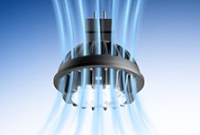
Unique ‘DimTone’ Dimming
The light gets warm when dimmed.
DimTone takes LEDlamp dimming to an exciting new level, creating a pleasant, warm ‘sunset’ effect as the light is dimmed. Regular LEDlamp dimming reduced the intensity of the light output but not the colour temperature, which remains constant throughout the dimming process.
This is perfectly sufficient for many applications. But now with the DimTone, the colour temperature is reduced as the lamp is dimmed. This creates a warm, intimate lighting effect at lower intensities, identical to the ‘sunset’ effect of a dimmed halogen or incandescent lamp. This means that hoteliers, bar and restaurant owners can now take advantage of energy-efficient LED lighting and still create a natural, cosy ambience when the light is dimmed.
Crystal Cool Technology – Aurora
Next generation thermal management
CrystalCool uses nanotechnology to provide extremely effective heat dissipation and thermal management.
LEDs generate significant amounts of heat in order to produce light. This normally requires a large thermal heatsink to adequately cool an LED lamp. The higher the lumen output, the more LEDs required, the larger the heatsink.
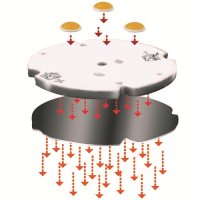
Higher quality, brighter light for longer
This efficient thermal management technology allows for an ultra-high lumen output and lifetime meaning lamps can now produce a higher quality of light for longer.
Additionally, crystal cool dramatically slows the rate of lumen depreciation. Relying solely on conventional heatsinking will help the gradual fading of LED light, but it still diminishes at a much faster rate when compared to the CrystalCool thermal management.
View our range here - http://www.thelightbulbshop.co.uk/Search.aspx?search=crystal
Dimming LEDs
LEDs are energy efficient by design. Simply using LED lamps or fixtures can help meet regulatory standards and energy saving requirements while reducing electrical consumption and costs.
Why is dimming your LEDs important?
To ultimately maximise energy savings, extend system life, increase productivity, and provide a safe and comfortable environment.
An extensive range of dimming controls are available with excellent technology. These include ranges from single switch to dimmers for a centralised lighting control system. This provides maximum flexibility and are easy to installation benefiting from a reduction installation and programming costs and improving the return on initial investment.
Consumers typically focus primarily on light quality and colour when choosing dimmable LED bulbs but it is important to note that various performance anomalies such as flickering which may occur with some LEDs. A good driver should account for these performance factors and still provide flicker-free, smooth and continuous dimming of the LED source.
We have a range of different dimmable LED bulbs:
Dimmable GU10 LED Lamps:
These GU10 LED bulbs are developed to replace halogen bulbs. With a range of wattages available to replace a maximum 50W halogen bulb benefiting from high energy savings.
Choose from a range of GU10 lamps from Philips, Osram, Sylvania and Toshiba.
Dimmable MR16 LED Lamps:
The MR16 retrofit lamp socket is one of the most universal, accounting for a large amount around the world. The lamp is very compact is size and is used in commercial and home applications providing narrow spotlighting to floodlighting.
When upgrading to LEDs from halogen low voltage MR16 GU5.3 bulbs it is important to note that sue to its very small form factor, MR16s are subject to thermal management issues. The LED junction temperature must be kept in an acceptable range to maintain lumen output and colour quality and it must be used in a fixture that allows heat dissipation.
Dimmable Classic Shaped LED Bulbs:
Dimmable Classic LED bulbs are the replacement for the traditional GLS bulbs. These are available in both E27 and B22d bases.
Designed to replace up to 100W GLS bulbs with longer lifetimes and high energy savings which produce a glow effect similar to that of the GLS bulbs.
We stock an excellent range from Osram, Philips, Sylvania, Ledon and Sylvania.
Dimmable Candle Shape LED Bulbs:
Dimmable Candle LED bulbs are the replacement for the traditional GLS bulbs. These are available in both E27, B22d and B15d bases.
Designed to replace up to 40W GLS bulbs with longer lifetimes and high energy savings which produce a glow effect similar to that of the GLS bulbs.
We stock an excellent range from Osram, Philips, Sylvania and Toshiba.
The excellent Philips MASTERLED Candle lamps have been has brought the sparkle back to chandeliers in the Wedgwood concession at the Harrods departmement store in Knightsbridge, London: http://www.lighting.philips.co.uk/projects/harrods.wpd
Dimmable Golf Ball Shape Bulbs:
Dimmable Golf Ball LED Bulbs are the replacement for the traditional GLS bulbs. These are available in E27 and E14 bases.
Designed to replace up to 25W GLS bulbs with longer lifetimes and high energy savings which produce a glow effect similar to that of the GLS bulbs.
Available in both clear and frosted finishes.
We stock an excellent range from Osram, Philips, Sylvania, Ledon and Toshiba.
Dimmable G9 LED Bulbs:
Dimmable G9 LED Bulbs are 100% retrofit and compact in size ideal for existing fittings. Save up to 80% in energy savings when you switch to LED G9s compared to halogen alternatives.
The cost effective and energy efficient G9 LED bulbs come in a range of colours from very warm white to cool white which illuminate your home. Ideal for everyday applications.
LED PAR20, PAR30 & PAR38 Lamps:


